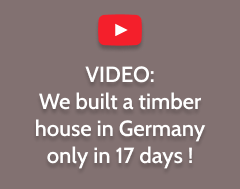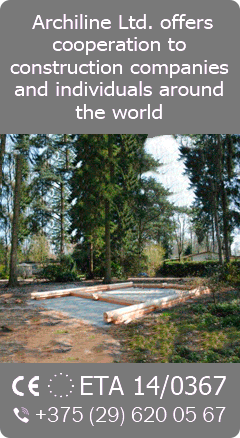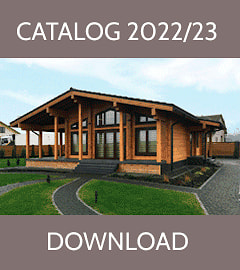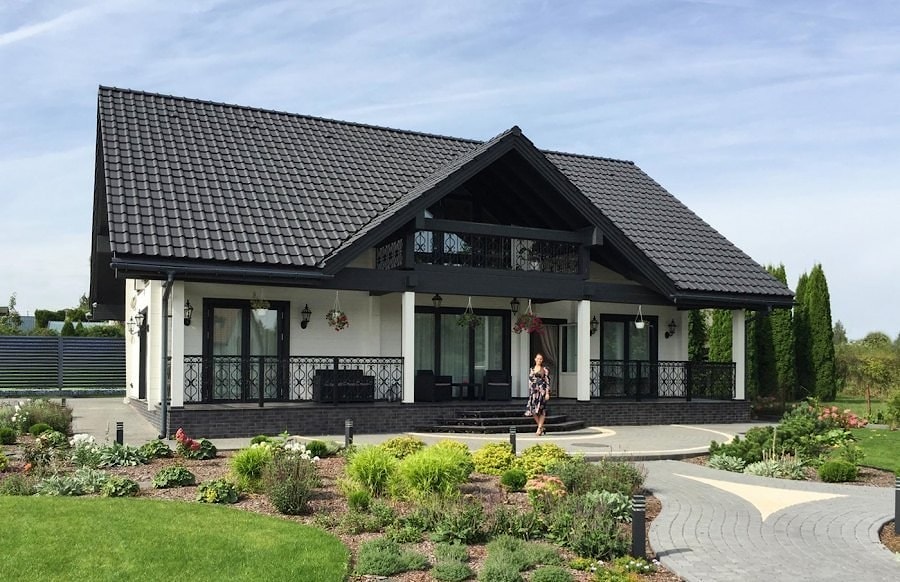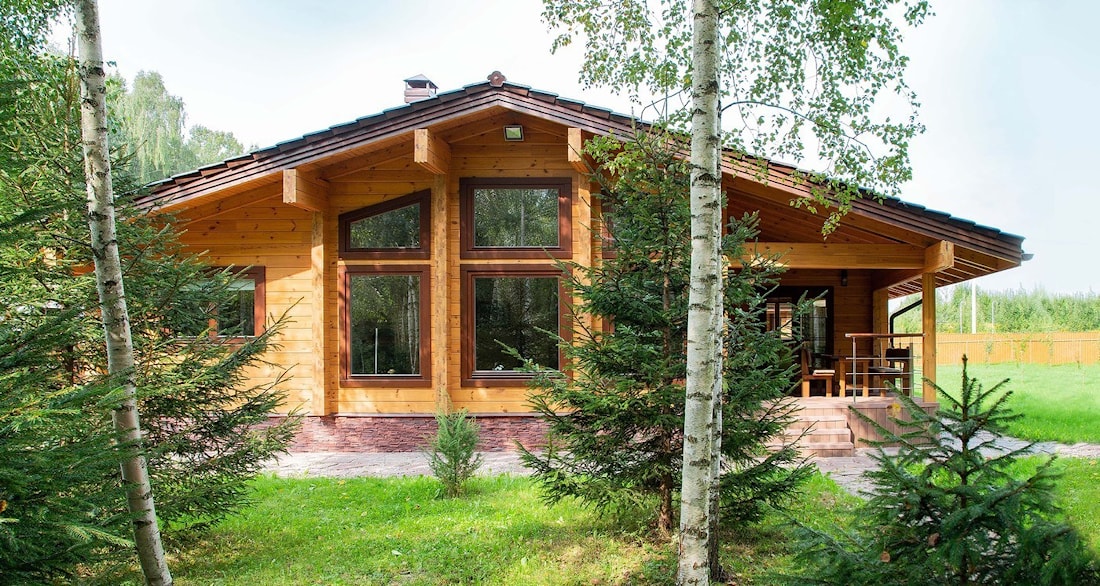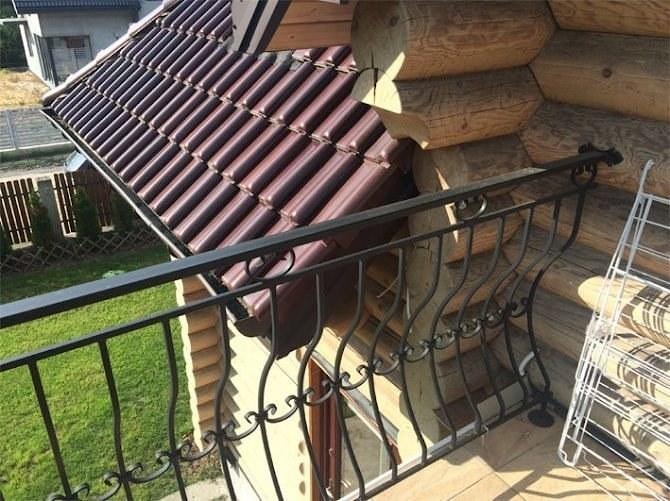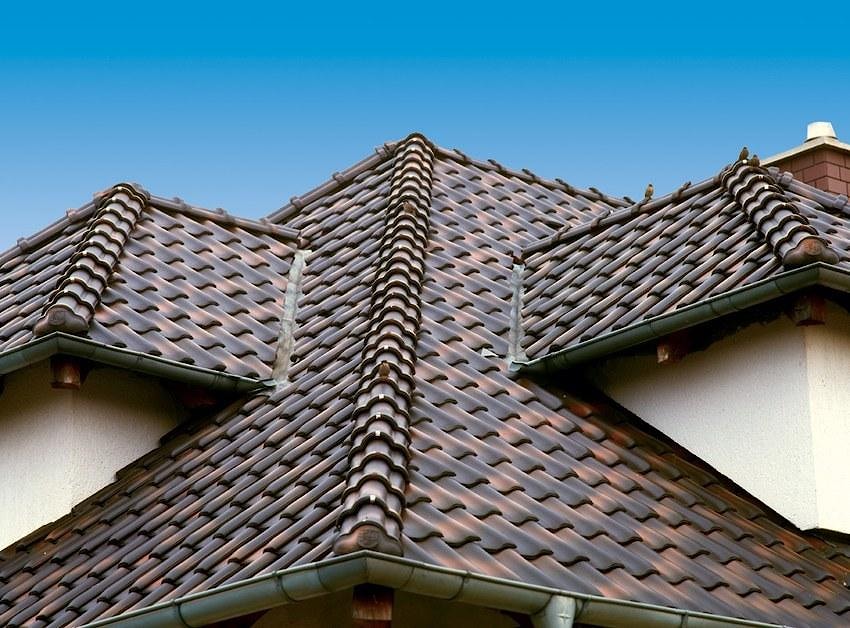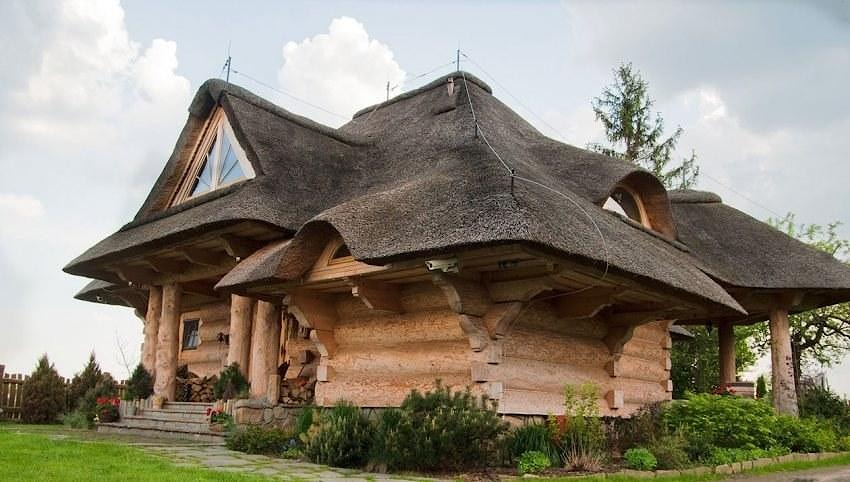≡ Menu
|
|
Green roof - a new trend in glulam house building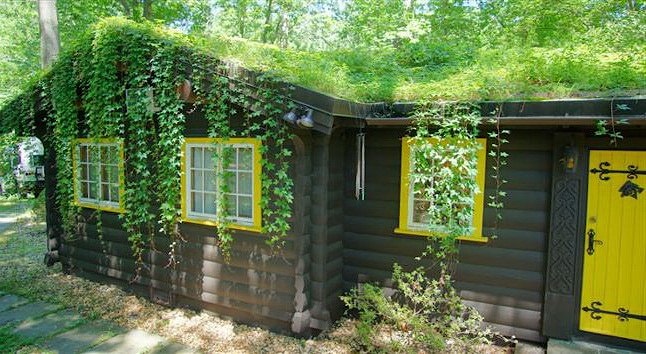 Green roof - a new trend in glulam house building Green roof - a new trend in glulam house buildingWith the development of the idea of ecological thinking green roof in glulam houses began popular in most developed countries, and in some cases they are even prescribed by town-planning requirements. In many cities of Europe and the United States a lot of gray roofs has transformed after landscaping. Modern methods of green roof in glulam houses, with special layers for planting vegetation, root barriers, drainage layers and so on, have appeared relatively recently. However, "green roof" is known for centuries. For example, the bark-covered turf roof in medieval Scandinavia. Modern landing technology appeared in Germany in the 1960s, and in the decades it has spread to different countries. It's estimated that around 10% of all roofs have been planted in Germany currently. In general "green roof" is the term for partially or fully planted with live plants roofs of the glulam houses. The plants are planted directly into the ground. Green roofs are also referred to as eco-roofs, oikosteges, vegetated roofs, living roofs, greenroofs and VCPH (Horizontal Vegetated Complex Partitions). Today the fashion for green roofs in the world in connected with the tendency of the environmental trends in society. At the same time planting the plants in pots, even placed on the roof, it is not considered "green roofs". Landscaped roofs absorb rainwater (thus offloading the sewage system and not giving a relatively clean rainwater to mix with sewage), provides protection from the noise and cold, as well as to protect the building from overheating in hot weather (which, in addition to increasing the comfort of living, significantly reduces the costs for air conditioning, and in several times prolongs the life of the roofs themselves, saving them from the weather). In addition, green roof in glulam houses is the decoration of the city and the habitat of urban fauna. There are two types of landscaping city roofs: intensive - can be also called "roof garden" - and extensive, in which the roof is covered by a relatively thin layer of soil, where stunted vegetation is planted that does not require special care. Extensive green roofs are almost autonomous, and as a result - inexpensive to operate. In order to increase the energy efficiency of the building even more, you can also install solar panels and thermal collectors on the roof. It is important to notice that this variant if roof covering is an extraordinary one yet. If you decided to design your own house, especially if it is a wooden glulam home, this kind of roof can conclude the natural house design, and highlight its character as an eco home. Efficiency Green roofs allow: - to reduce the need for artificial climate control systems, as they increase the mass of the heated surface and its thermal resistance A study conducted in 2005 at the University of Toronto showed that greened roof also help to reduce heat loss and the cost of heating in the buildings in the cold, bringing such buildings to passive house standards. - to reduce the need for cooling of buildings by 15-19% due to the natural evaporation of moisture The best protected from overheating are the roofs with the broken system of greenhouses installed, that pick up excess heat. Studies show that in the summer a large concentration of green roofs can significantly reduce the average temperature of the whole city. - to reduce the amount of water that falls to the ground as rain, or as a result of melting snow, and so on. - green roofs can become a habitat for urban fauna - green roof contributes to a significant reduction in air pollution and enriching it with oxygen, which in turn increases the comfort of living in the city and reduce the number of diseases, particularly asthma - this kind of roofs clean rain water, from heavy metals as well - green roof absorbs noise; while the soil layer absorbs low frequency sound, and plants – high. - financial advantage - being protected from the weather and climatic influences, greened roofs have several times longer service life than other roofing materials. - Increase the value of the property - the green roof is often a key component in the development of the passive glulam house. Types of green roofs Green roof can be divided into intensive and extensive, depending on the volume of soil (or other planting material), which is located on the roof and the amount of care that is required afterwards. For high plants, that are usually an integral part of the garden on the roof, up to a meter of soil can be needed, as well as gardeners constant care; so this type of gardening is considered to be intense. As a result, the roof often resembles a small park, where any plant, from salads to shrubs and trees can grow. Extensively greened roof, on the other hand, require little maintenance (often in order to maintain plant life on a roof it is enough to fertilize it once a year), and the minimum layer of soil or compost required for placement of plants. Usually "extensive" roofs are closed to a large audience access (as opposed to the park "extensive" roof) and are visited only by personnel that take care of it. Green roofs can be not only flat, but inclined. In some cases, (a good example is turf roof traditional for Scandinavian glulam houses) the construction of inclined greened roof is even simpler than that of a flat roof- as the slope of the roof allows excess water easily to flow down, there is no need to use expensive water-resistant coating and drainage layers, which are an integral part of landscaping flat roofs. 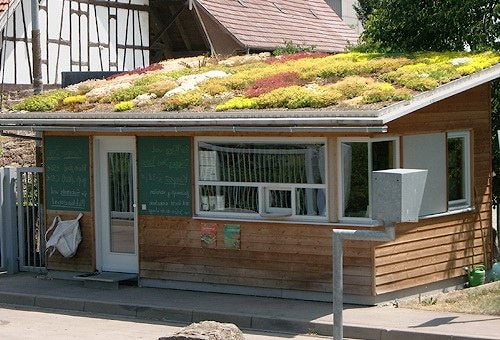 Installation costs According to approximate calculation square meter of green roof can cost about 120-180 US dollars, not including the cost of the waterproof roof covering. The cost varies depending on the type of coating and the type of green roof gardening, as well as supporting structures. In some cases it is also important to remember about additional payments, for example costs of caring for extensive roofs (the annual weeding of vegetation). Care of "green roofs" may include soil fertilizer - usually this is true for flowers and succulents; if the landscaping of the roof is limited by green carpet, the fertilizers are not commonly used. However, if there is a need to use this type of roof fertilizers, it requires special fertilizers which won’t be rinsed by rainwater and will not pollute the wastewater. Thus, conventional liquid fertilizers are not suitable for extensively greened roof. Disadvantages The main disadvantage of greened roofs is a large initial cost compared to other roof types. Also in earthquake-prone regions green roof construction can greatly complicate the house design, in particular roof carcass. Not all existing building can be equipped with green roofs due to the fact that not all roof constructions can withstand the load. The problem of maintaining a constant humidity of the roof is actual for many species of plants. As a result, a reliable protection against leakage is needed (plant roots can break through the membrane in water protection, so you need as root barrier layer). However, extensive green roofs, such as sedum coated, don’t have this problem, since this kind of vegetation periodical rainwater is enough, as they can live for a long time in dry soil. Remember that working life of the green roof is several times longer than the usual one has, as the vegetation protects the roof and the membrane layers from the effects of weather conditions and UV light. Enthusiast, who decided to build glulam house with green roof, receives a number of advantages over the supporters of traditional solutions. First of all, we should name additional heat and sound insulation of the house. Green roof - an excellent thermal insulation: in winter it protects from the cold, and in summer - from overheating, it has a positive effect on the microclimate under the roof and on the site. Therefore, the green roof and useful in the northern and southern regions. The working life of the roof is at least 20 years without repair. Properly landscaped roofs ensures long-term preservation of waterproofing coating, which somehow suffers from UV radiation and temperature extremes, is a subject to deformation or uneven heating and mechanical damage. From all this will protect the waterproofing layer and pound green carpet. Another important moment is that greened roof compensates space. By greening the roof of the glulam house, especially built in a small area, the owner will return the green lawns, died under building construction, and will keep the microclimate of the territory. Rules of garden designed on the roof To create a fully landscaped roof, from the very beginning of the house design the participation of experts is required - not only roofers and architects, but dendrologists as well. Greening puts additional strain on the structure of the roof and the house in general. This is necessary to distribute the load intelligently. With a thickness of 5 cm of the soil, 1 m2 weighs 100 kg. Even if the thickness of the soil layer is 15-20 cm, soil weighs 200 kg / m2 and drainage add another 100 kg / m2. In view of the snow load reaches 400 to 500 kg / m2. When planting small trees and shrubs, the useful depth of the soil layer is 40 cm, and the load on the overlap will reach 700 kg / m2 or more. The design of the garden on the roof Green roofing system differs from the usual one by its structure. Traditionally roofing system for planting is as follows: above the load-bearing structure cement-sand screed is made with a slope of 1.5-5 ° towards the drain (slope is required for any flat roof). Its surface is treated with a primer - a mixture of oxidized bitumen and a solvent. Over screed vapour seal covering is loosely laid, which protects the insulation from moisture inside the premises. The next layer is insulation. It should have a high compressive strength, as it will experience increased static and dynamic loads. Materials that will cope with this task are attributed cork boards, polyurethane foam and extruded polystyrene. In case of insufficient rigidity of insulation a cement screed should be made for the distribution of loads on top of it. This is followed by a protective (separating) layer of geotextile (geo) - a sustainable material made of polypropylene or polyvinyl chloride (PVC). Geotextile is necessary to avoid mechanical damage of the next layer - waterproofing. On the green roof it imposes more stringent requirements: it must defend not only from precipitation and moisture when watering, but also be flexible, strong, and resistant to microorganisms and humus. For this purpose the best suitable material is polymer-bitumen membrane reinforced. Root barrier layer prevents root penetration into the waterproofing layer. It is best to make it out of the elastic polymer pad with special cells, retains moisture, although you can use a solid film with a metallic coating. This creates the basis for the subsequent laying of specific layers of greened roof. 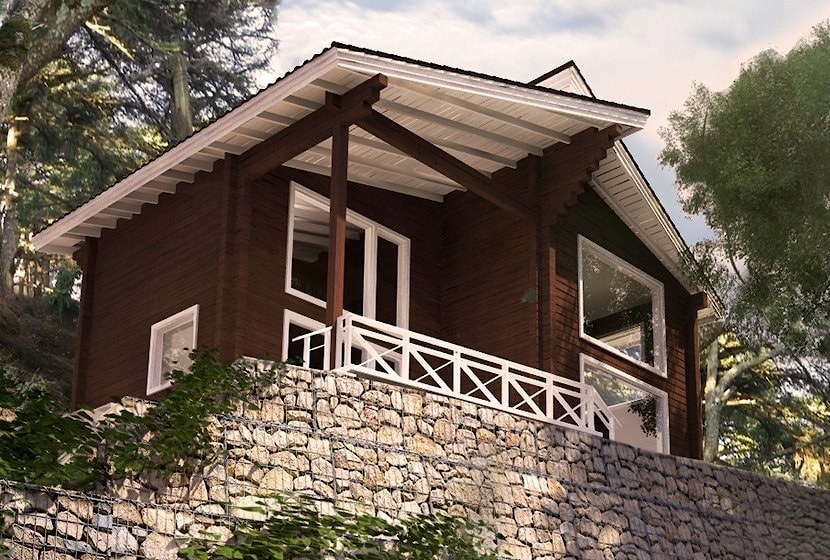 Special layers The composition and thickness of subsequent layers of greened roof depend on the type of landscaping. If you choose the easiest way: the plants are in pots, - coating is made in the traditional way for the terraces. Over the prepared base the layer of pebbles or gravel is made (with thickness of 35 cm). On the top there are free-standing slabs of concrete or other suitable material. Terraces, covered with a layer of pebbles, are popular. And you can even walk through them. The drainage layer 5-10 cm thick removes excess water and retains moisture in the dry season. It connects to the drainage system. Classic lightweight materials for drainage are- expanded clay gravel, perlite coke and chipped pumice. Heavier materials are the following: loosened gravel and clay. The drainage layer can be also made of polyamide. Sometimes drainage tubes are placed in gravel layer to improve the water flow. Filter membrane prevents the drain of fine soil particles and washing away topsoil. This layer is made of geotextile, impermeable to water and plant roots and it does not rot. Clay substrate (growing medium) is a mixture based on soil, sand, expanded clay, perlite, peat, clay, slate, wood chips and shredded bark, sometimes with the use of synthetic materials. Its composition and thickness (8-50 cm) for particular roof sections are selected based on the needs of plants. Ordinary land use is not recommended. The inhabitants of the garden Plants choosing is a responsible decision, which determines not only the aesthetic characteristics of the garden, but also the complexity of care. Plants on the roof are in extreme conditions similar to those in the mountains, and shall be adapted to them. In addition, not all plants are able to withstand the cold winters with thin, freezing through soil layer. Therefore, basic requirements for the "residents" of the garden on the roof is the resistance to sudden changes in temperature, frost, wind, radiation, dry air, lack of nutrients and moisture. The list of plants recommended for green roof in each country is different. If the favorable conditions created, plants develop faster than their 'terrestrial' counterparts. Therefore, on the roof they should be transplanted more often. Under the bright sun plants awaken in the spring earlier than in the terrestrial environment, they bloom earlier and have more intense color of autumn foliage. The solution for pitched roof Greening of pitched roofs in brick or wood house is made if its slope does not exceed 30 °. A suitable solution for it is a complete extensive landscaping lawn of hardy grasses. Thermal insulation on top of the roof sheathing is not needed, because at the pitched roof it is located under the rafters. Since slope allows easy flow of water from the roof, there is no drainage layer: clay substrate is placed directly on a solid crate roll, waterproofing membrane and root barrier. To avoid slipping of the ground, the restrictive upstand should be arranged around the perimeter of the roof. It should be a few centimeters higher than the height of the vegetation layer. It is also desirable to establish a special layer on top of root barrier that will evenly distribute and retain soil on the surface, you can also use a special geogrid, designed to strengthen the slopes. Helpful advice in green roof planning To gain a good result when planning a garden on the roof, you should know what you want to see in the end. Be sure to visit the similar gardens or at least read the catalog of firms engaged in landscape design. But in any case, remember that the green roof construction has its own characteristics: The most important factor is the ability of the roof to withstand the extra load. It is possible that before the laying of the garden you will have to carry out additional work to strengthen the supporting structures and ceilings. Root growth of plants should be taken into account in the project, and the use of polymer films that prevent the increase of the root system is also very important. Pay your attention at the joint. Any poor-quality joints can result in damaging of the waterproofing layer by the roots and the leakage of water remaining after watering. To create a slope and decorative elements polystyrene foam-concrete and other structures from lightweight concrete are used. Special screens, grids and high parapets will secure the plant against mechanical damage and hypothermia by the wind. The most important point in the green roof garden construction project is the correct waterproof layer installation. If over time it will begin to leak, you will have to dismantle the whole green roof "pie". We therefore recommend, first, to choose high-quality waterproofing materials, specially designed for underground structures and that have protection against root penetration. And secondly, you should trust its installation only to qualified roofing crews. Finally, do not save on the substrate, because plants ability to live on the roof depends directly on its quality. A perfect addition to the green roof can become a facade greening system. On the roof that is exploited, not only flowers and plants are placed, but also leisure area can be organized. Garden on the roof, like any ordinary garden, are carefully planned in terms of landscape design. It is possible to arrange the greening on the roof of the old buildings. You will just need a bit of work on the existing roof structure for your glulam house. The garden on the roof must be watered regularly and protected from overheating. The most competent variant from a professional point of view is considered to be a landscape design on the roof, which provides a beautiful decorative plants exhibit throughout the year, including winter. 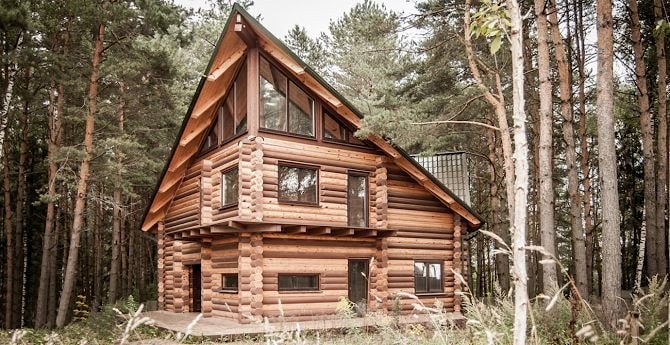  We speak English, German, Turkish, French and Russian +375298-06-05-67 -- WhatsApp, Telegram, Viber Look more: Wooden house made of glued laminated timber "White House"Look more:You can see a video-review of the wooden house "Mirage":Wooden house "Mirage" from profiled glued timber 99m2If you are interested in green roof - a new trend in glulam house building , you may:
Call: More from section Roof of a wooden house |
|
© 2024
ArchiLine Wooden Houses
114-49, Necrasov str., Minsk, Republic of Belarus, 220049
The site is powered by Nestorclub.com | |
 Good Wooden House since 2004
Good Wooden House since 2004
